thewirecutter
Latest
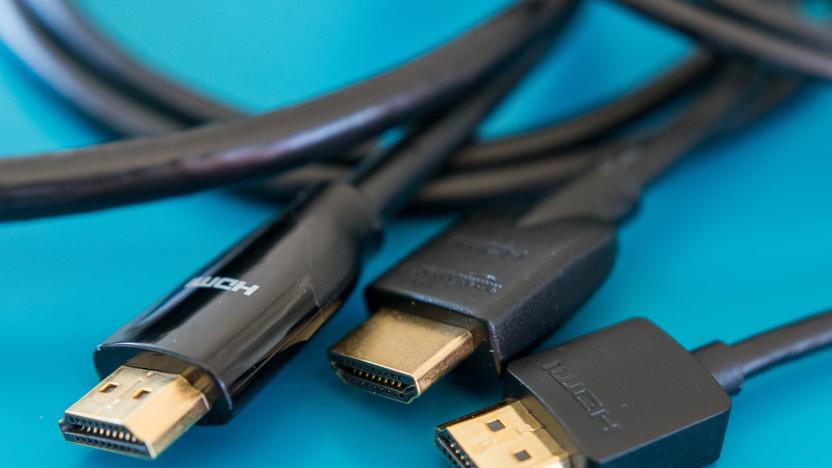
Cheap, great HDMI cables
By Geoffrey Morrison This post was done in partnership with Wirecutter. When readers choose to buy Wirecutter's independently chosen editorial picks, Wirecutter and Engadget may earn affiliate commission. Read the full guide to cheap, great HDMI cables. If I needed an HDMI cable, I'd get the 3-foot AmazonBasics High-Speed HDMI Cable. This cable (also available in lengths up to 25 feet) will handle the 18 Gbps (gigabits per second) of data required of Ultra HD 4K video with HDR. It also has a lifetime warranty and free shipping if you're a Prime member. You might be able to find even cheaper HDMI cables, but none have its warranty and easy return policy. The AmazonBasics High-Speed HDMI Cable is a no-frills HDMI cable, but with HDMI, frills aren't necessary. The cable is sturdily built and works with any video signal of today (and probably ones into the near future). Both the 3- and 15-foot lengths passed all our tests, including HDR tests. It has a 4.6/5 rating on Amazon from over 15,000 reviews. They sell for about $2 per foot or less, if you have Amazon Prime (free shipping). If you don't have Prime, Amazon lowered the price of their free shipping to orders above $35. Or, if you just don't want to go with Amazon, Monoprice cables work the same and are very close in price. The Monoprice Certified Premium High Speed HDMI Cables work just as well as the AmazonBasics cables but are slightly more expensive when you include shipping. Either way, the prices are very close. Monoprice also has a far greater variety of lengths and thicknesses across a huge number of different series. So if you need a short, skinny cable or very long lengths to make your installation work, Monoprice likely has an inexpensive option that will do the job. For reasons we'll explain, there is no need to spend more on a basic HDMI cable.
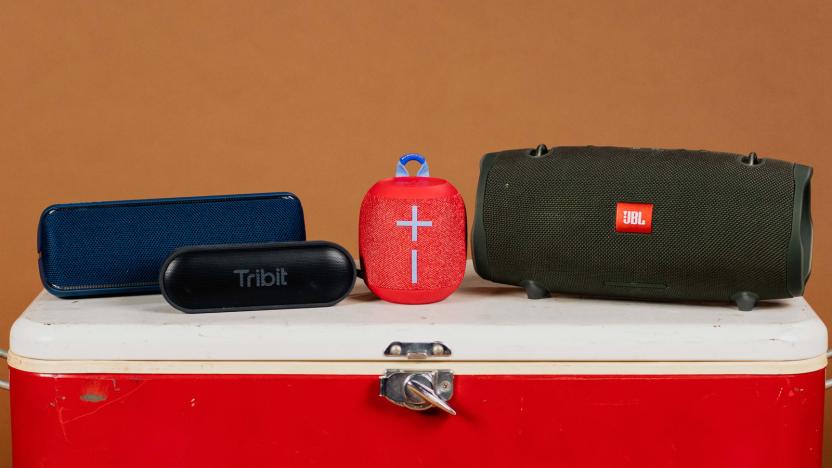
The best portable Bluetooth speaker
By Brent Butterworth This post was done in partnership with Wirecutter. When readers choose to buy Wirecutter's independently chosen editorial picks, Wirecutter and Engadget may earn affiliate commission. Read the full guide to portable bluetooth speakers. Portable Bluetooth speakers come in a variety of shapes, sizes, and prices, so it's impossible to say that any one model is perfect for everyone. But we think the UE Wonderboom 2 has the best chance of delighting your ears without walloping your finances. This speaker has a full, clear sound and a compact design. It's also waterproof and dustproof, and built to survive even the most adventurous vacations. The UE Wonderboom 2 is as euphonious as Ariana Grande but as tough as Lara Croft. In our blind tests, our panelists picked this Bluetooth speaker as the best-sounding model under $100, with its especially clear vocal reproduction and a decent amount of bass for its size. It has an IP67 rating and is one of the most rugged Bluetooth speakers we've tested, able to survive a 5-foot drop and a dunking in 1 meter of water—but because it floats, it'll probably never dive that deep. The Wonderboom 2's only downside is its battery life, which, at eight hours, is adequate but not impressive. We like the Wonderboom's cute, compact design, even if the almost-spherical shape makes this model a little tougher to pack away in a suitcase pocket or laptop bag. If you want a portable Bluetooth speaker that approaches the sound of a good small stereo system yet is rugged enough to take almost anywhere, the JBL Xtreme 2 is a terrific choice. Three of our four listeners thought the Xtreme 2 was the best-sounding speaker we tested, praising it for its ample bass, high maximum volume, and overall clear, clean sound. It's IPX7-rated, which means it can survive submersion in 1 meter of water, and it includes a handy, strong carrying strap. The Xtreme 2 also delivered 19 hours of battery life. But it's much larger and pricier than the UE Wonderboom 2. If you need something that sounds a little louder and fuller than the UE Wonderboom 2, but that's more portable and affordable than the JBL Xtreme 2, the Sony SRS-XB32 finds a nice middle ground. It's about twice the Wonderboom 2's size, plays a little bit louder, and puts out a lot more bass. It's also rugged, with an IP67 waterproof/dustproof rating. In our battery test, it automatically reduced its volume after about six hours of fairly loud use, but it played for about five more hours after that. It also has adjustable multicolor lights and flashing strobes, which don't appeal to us—but somebody must like these things or manufacturers wouldn't keep including them. If you want to spend the bare minimum on an all-around good portable Bluetooth speaker, the Tribit XSound Go is a great choice. Its sound is obviously clearer and louder than that of almost all other budget Bluetooth speakers. The XSound Go is also small enough to slip into a laptop bag or an already stuffed suitcase, and it will run 10½ hours on a charge. Plus, it's IPX7-rated, which means it's sufficiently waterproof to survive a half-hour dunking in 1 meter of water, and it has a speakerphone function. The EcoXGear EcoBoulder+ is a completely different kind of portable Bluetooth speaker than our other picks—it pumps out maximum volume for pool parties, picnics, and tailgating events. Although it can blast, it can also soothe—not only with its full, natural sound, but also with a built-in bottle opener and cupholders. Weighing 29 pounds and sized like a roll-aboard suitcase, the EcoBoulder+ is not something you'll take on business trips, but its retractable handle and wheels do make it easy to lug around. It also has a built-in AM/FM radio and a long battery life—24 hours, in our test.
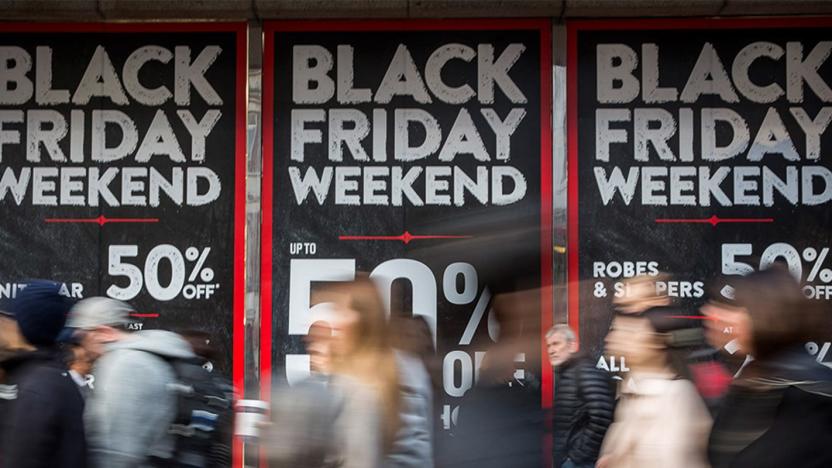
Five things to avoid on Black Friday
By Elissa Sanci To make the most of Black Friday, follow the Wirecutter Deals page throughout the event, where we'll be updating our list of researched deals that are actually worth your time. See Wirecutter's latest deals here. Black Friday is a highly anticipated day for shoppers who can't resist a good deal. For others, it's an overwhelming 24-hour marathon where the pressure to buy anything (everything?) feels unbearable. For me, watching a timer tick down the minutes until the discounts expire makes me panic, and most years I wind up buying nothing. But there's no longer a reason to panic on Black Friday. Through our obsessive price tracking and deal finding for the Wirecutter Deals page and daily deals newsletter, my coworkers and I know that some bargains get posted as early as November 1, turning Black Friday from one high-stress day into an entire month rich with discounts. That ticking clock creates a sense of urgency, and sometimes, you do have to be quick to buy a deal before it expires. More often than not, though, you can take an extra few minutes to verify details and really think about your needs. To help reduce your stress on Black Friday, here are five things the Wirecutter Deals team thinks you should avoid this year while you hunt for the best deals on the items you actually need.
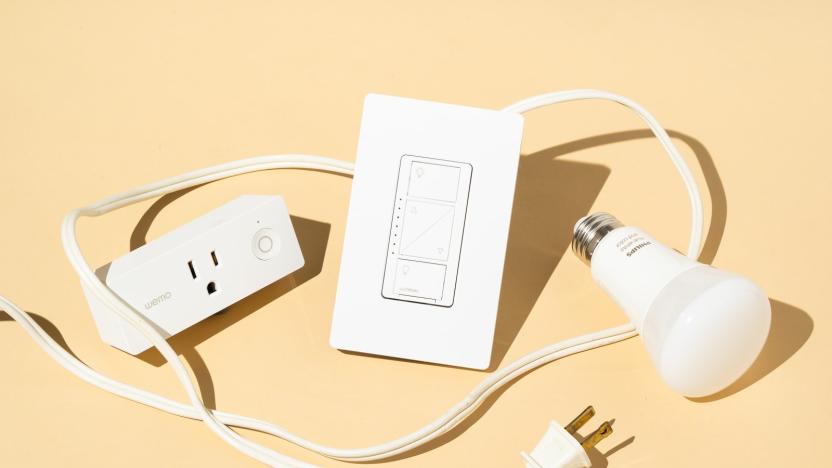
When to use a smart bulb, switch or plug
By Rachel Cericola This post was done in partnership with Wirecutter. When readers choose to buy Wirecutter's independently chosen editorial picks, Wirecutter and Engadget may earn affiliate commission. Read the full blog seeing the light: when to use a smart bulb, switch, or plug. I'm not sure if it's because I've captured a lot of critters on home security cameras or seen one too many horror movies, but entering a dark house terrifies me. Although my husband would be perfectly happy to solve this problem by leaving the lights on all day and night, it's completely unnecessary: Smart lighting exists for precisely this purpose. Setting up your home with smart lights can solve a lot of problems. However, because there are several types of devices you can pick from—bulbs, light switches, and add-on plugs—it can be hard to know where to start. Why and when do you pick one of those devices over another? All smart lighting devices allow you to control them from your smartphone, and you can set them up to work like old-fashioned lighting timers, but they can do much more. You can control whole groups of lights at once, set them to go on and off based on local sunset times, and configure them to respond to other smart devices, such as motion sensors or security cameras. But each type of device has a superpower (and also a weakness, just like Superman). Let's look at what devices work best for three different scenarios.

The best 4K monitors
By Justin Krajeski This post was done in partnership with Wirecutter. When readers choose to buy Wirecutter's independently chosen editorial picks, Wirecutter and Engadget may earn affiliate commission. Read the full guide to 4k monitors. Anyone buying a monitor in 2019 should consider a 4K monitor first: They don't cost much more than non-4K models, and they look a hell of a lot better. After spending 50 hours researching nearly 60 monitors and testing six finalists, we found that the HP Z27 is still the best 4K monitor for most people. It's extremely color accurate, it can charge your laptop from its USB-C port, and it has a highly ergonomic stand. The HP Z27 is the best 4K monitor especially if you have a USB-C laptop or plan to get one, which is more and more likely in 2019. The screen is one of the most color-accurate we found, and its stand is more adjustable than most, with tilt, pivot, swivel, and height adjustments that make it easy to set at the correct height and position for your needs, especially if multiple people share the same monitor. The USB-C port means that if you have a compatible laptop, such as a recent MacBook or Windows ultrabook, you can use the single USB-C connection to connect to the screen, charge your laptop at up to 65 W, and power the monitor's two USB 3.0 ports for use with mice, keyboards, storage, or other devices, all at the same time; this dramatically reduces the number of cables around your desk. The monitor also has thin bezels, so the screen appears larger and the monitor takes up less space than some other models. (Thin bezels also just look better.) HP covers the Z27 with a three-year warranty and a dead-pixel policy that should be a comfort to anyone buying a 4K monitor. The Lenovo ThinkVision P27u is a good runner-up option if the HP Z27 is out of stock or too expensive. Its colors are a bit more accurate than the Z27's—albeit not in ways that are detectable to the naked eye—but its contrast ratio is a bit worse, which is noticeable. Its adjustable stand lifts, tilts, and pivots, but it doesn't swivel like the Z27's does. Nor is this monitor as aesthetically pleasing: Its buttons are on the front, its base is rounded instead of squared, and a thick neck connects the monitor to the base, in contrast to the HP design's thinner, dual stems. Like the HP, the Lenovo can connect and charge a laptop via USB-C, and it includes a useful DisplayPort connection as well as HDMI and USB 3.0 ports. Like the Z27, the ThinkVision P27u has thin bezels around the sides and the top, which makes its screen nice to look at. It comes with a three-year warranty, too. Although the Dell UltraSharp U2718Q offers an amount of adjustability similar to that of the HP Z27 to accommodate different postures at work, in our testing it wasn't as color-accurate—in particular, its grayscales were inaccurate, which could lend a colored tint to monochrome images. It also lacks USB-C connectivity. We think USB-C support on a monitor is worth paying more for in 2019, but if you don't think the same—for example, if you plan to use your monitor only with desktop computers that have discrete graphics cards, which don't usually support USB-C—you can typically save about $100 by buying the U2718Q instead of the HP Z27 or Lenovo P27u. The U2718Q comes with a useful three-year warranty, as well as a Premium Panel Guarantee that covers defective pixels; if there's even one bright pixel, Dell will replace the whole monitor. If you buy the Dell U2718Q, make sure it's running firmware version M2B102 or newer, and update it following these steps if necessary; older firmware versions produced visibly inaccurate greens and yellows that this firmware version fixes. If you want a physically larger screen, a monitor you can use with two computers at the same time, or one that can charge a 15-inch MacBook Pro at full speed over its USB-C port, we recommend the 32-inch Dell UltraSharp U3219Q. Its color accuracy is comparable to that of our top picks, and it has plenty of ports, including a USB-C port that can receive the video signal, provide a data connection between your computer and the monitor's USB 3.0 ports, and charge your laptop at up to 90 W. The U3219Q also has rare features such as a built-in KVM (keyboard, video, mouse) feature and picture-by-picture mode, which allow you to use a single keyboard and mouse to control two computers and even view both on screen simultaneously. The U3219Q costs nearly $200 more than our pick at the moment and takes up significantly more space, but if you want to avoid scaling or you're running a two-computer setup, it's an excellent choice. If you don't have room on your desk for a 27-inch monitor but you still want a good 4K screen, get Dell's P2415Q. The P2415Q's screen is 3 inches smaller diagonally than the HP Z27's, with extremely accurate colors and similar features. It has HDMI and DisplayPort connections plus four USB 3.0 ports, and its stand is just as adjustable as that of the Z27. The relatively thick screen bezel makes it look chunky next to newer 4K monitors, but it's still the best 24-inch 4K monitor we've tested. It comes with the same dead-pixel policy and warranty as the Dell U2718Q. It doesn't have USB-C support, but we can't find a 24-inch 4K monitor that does.

Shopping tips to get the most out of Black Friday and Cyber Monday
By Nathan Burrow Black Friday 2019 is coming, and we're getting ready to bring you all the best deals on Wirecutter picks and recommendations from our expert staff. Bookmark our Deals page, follow @WirecutterDeals on Twitter, and sign up for our daily deals newsletter to see the best deals from around the Web on Black Friday—and every day. Whether you're a technophile awaiting the first real discount on the Bose Noise Cancelling Headphones 700 or a homebody feathering your nest, Black Friday and Cyber Monday offer opportunities to get a great price on that special something. The Wirecutter Deals team keeps tabs on all the discounts, from sitewide promotions to flash sales. Last year, we sifted through nearly 80,000 deals over the duration of the November deal holidays. We find and post the best sale prices on great gear all year round, so when Black Friday arrives, we have the experience and the know-how to find you the best deals on the best stuff and to omit the duds. Following are some shopping tips for Black Friday and Cyber Monday that we apply both in our day-to-day scanning and in our own Black Friday shopping—we hope they'll help you get the most for your money.
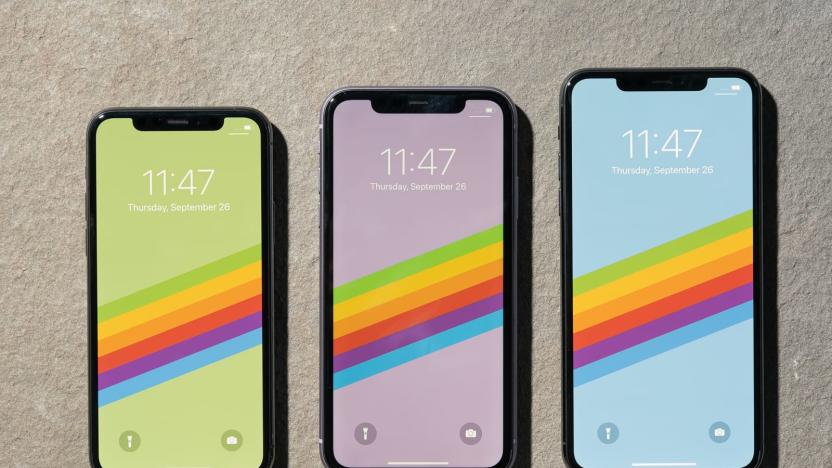
How to find Apple deals this Black Friday
By Elissa Sanci Black Friday 2019 is coming, and we're getting ready to bring you all the best deals on Wirecutter picks and recommendations from our expert staff. Bookmark our Deals page, follow @WirecutterDeals on Twitter, and sign up for our daily deals newsletter to see the best deals from around the Web on Black Friday—and every day. I am an Apple superfan. I own an iPhone, a MacBook, and a graveyard of now-discontinued iPods that I hide away in a desk drawer. I think about splurging on an iPad often, and though I have no actual use for one, I've been dropping hints to anyone who will listen that I'd like an Apple Watch for Christmas. As Black Friday approaches, it's only logical to assume that the steep discounts will extend to Apple products, giving you a chance to stock up on the newest gadgets. I know I was looking forward to it. Unfortunately, though, this isn't usually the case: Apple gear rarely experiences deep price drops, even during big deals holidays like Black Friday and Cyber Week (or the month leading up to them). According to senior staff writer Nick Guy, who's spent years covering Apple products for Wirecutter, finding great deals on Apple devices can be tricky because discounts are generally restricted to older products. Although you won't find many deals on newer stuff, there will definitely be opportunities to score good deals on some Apple products: Our experts predict nice price drops on iPads and Apple Watches this Black Friday, with older models seeing particularly good deals. And though it's unlikely we'll see great deals on phones or laptops, there's a possibility we'll see a rare MacBook price drop or a gift card offer for iPhones that will be worth your time. To help you navigate Black Friday's deals landscape and come out on top, we've put together a full guide of everything you need to know about scoring the best prices on Apple stuff this holiday season.
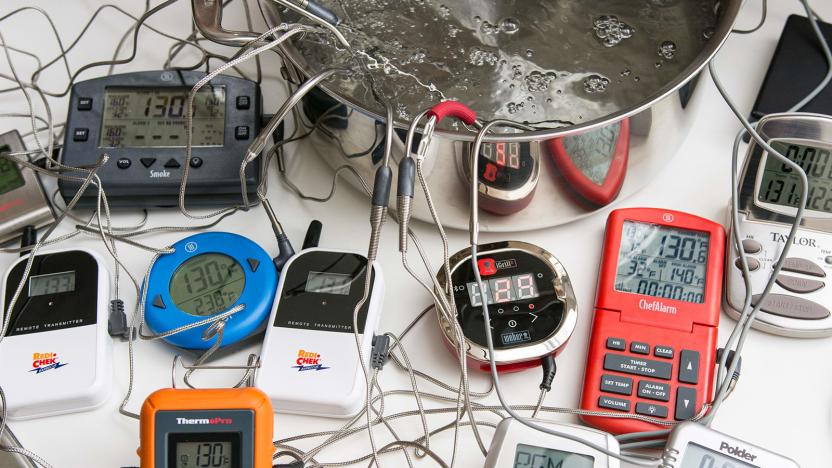
The best probe thermometer
By Michael Sullivan This post was done in partnership with Wirecutter. When readers choose to buy Wirecutter's independently chosen editorial picks, Wirecutter and Engadget may earn affiliate commission. Read the full guide to probe thermometer. After spending 20 hours testing probe thermometers and speaking with experts—including cookbook authors, chefs, butchers, and a New York City Department of Health employee—we think most cooks just need a regular meat thermometer. But if you're set on getting a probe thermometer to measure the temperature of food while it cooks, we recommend the ThermoWorks Dot. In our tests, the Dot was the fastest and most accurate at reading temperatures. Its simple design and straightforward controls made it easier to use than the competition. The ThermoWorks Dot is accurate, affordable, and easy to use. It has a very wide temperature range, as it's capable of measuring from -58 °F to 572 °F. It also has one of the longest probe cables of any of the thermometers we considered. The digital display on the ThermoWorks Dot is easily readable, and we thought the controls were straightforward and intuitive. We also like its backlit screen, which is handy for outdoor grilling at night. If you're looking for a few more helpful features, the ThermoWorks ChefAlarm includes a timer and volume adjustment as well as a backlit screen. In our tests, though the ChefAlarm was a couple of seconds slower than the Dot at reading temperatures, it was just as accurate. We especially liked the convenience of the timer on this model. The digital unit is also hinged, so you can lay it flat or adjust it to a specific angle. Unlike our other picks, the ChefAlarm thermometer comes with a case to hold the probe and the digital unit. Unlike our other picks, the ThermoWorks Smoke can operate via a wireless receiver and has two channels to accommodate multiple probes: one probe to take the internal temperature of the meat, and an air probe for measuring the ambient temperature of the oven, grill, or smoker. In our tests, the Smoke maintained its wireless connection for an unobstructed distance of 350 feet. It has a backlit screen and volume control, but no timer, and because it's $60 more than our main pick, we recommend it only for grill and smoker enthusiasts.

The best USB car charger
By Nick Guy This post was done in partnership with Wirecutter. When readers choose to buy Wirecutter's independently chosen editorial picks, Wirecutter and Engadget may earn affiliate commission. Read the full guide to USB car chargers. For a few bucks, a good USB car charger can charge your phone and other devices faster than the port that came in your car. After testing more than 60 models, we think the best car charger is the dual-port Nekteck PD 45W Type-C Car Charger. You can fast-charge phones, tablets, and laptops from its USB-C port, and simultaneously charge a second phone on its USB-A port. No other charger offers as much power for a better price. Compared with the familiar USB-A port, the smaller USB-C port can charge most modern phones faster (if you're using the right cable) and can even charge tablets and laptops. And the Nekteck PD 45W Type-C Car Charger provides the best of both worlds. When you're using a USB-C–to–Lightning cable, the charger's USB-C port can charge an iPhone about three times faster (at 18 watts) than the USB-A wall charger that comes in the box from Apple; your phone can charge from empty to roughly 50 percent in just half an hour while you're sitting in traffic, say, or running errands around town. This Nekteck charger's 45-watt output and included USB-C–to–C cable also support the maximum charge rate on Android phones (such as the Samsung Galaxy S10), the 2018 iPad Pro, and even many laptops. And you can use the 12-watt USB-A port at the same time to charge a second phone or other device with any USB cable you already have. Port one: 45 W USB-C Port two: 12 W USB-A With two USB-C ports, the Scosche PowerVolt Power Delivery Dual 18W USB-C Car Charger (CPDC8C8) is what you should get if you want to fast-charge two modern devices at the same time. Each of the PowerVolt's USB-C ports supports full 18-watt charging, so you can charge two modern phones at top speed; that means an iPhone's battery will go from 0 to around 50 percent charged in half an hour, compared with about 35 percent on a standard 12-watt USB-A charger. A dual–USB-C setup is rare—this is the only such model we've found from a company we trust. You can still use this charger with older phones, such as an iPhone 7 or earlier—they just won't charge any faster than on a USB-A charger. Port one: 18 W USB-C Port two: 18 W USB-C We think getting a faster USB-C charger is worth spending a little more, but if you simply want a good, inexpensive power source in the car, go with ZMI's PowerCruise C2 36-Watt Dual USB Car Charger with QC 3.0. All two-port, 24-watt chargers from reputable companies in this price range work just as well as any other, but unlike similar models we tested, this ZMI charger stands out because it supports Quick Charge 3.0 on both ports, offering slightly faster speeds to devices that support that standard. It's also made of metal instead of the cheaper-feeling plastic of almost every other charger. Port one: Quick Charge 3.0 USB-A Port two: Quick Charge 3.0 USB-A The RAVPower Quick Charge 3.0 54W 4-Port Car Adapter (RP-VC003) is especially useful when you're traveling with a car full of passengers, as it can charge up to four devices simultaneously without taking up much more space than competing two-port models. Each of its ports can put out 12 watts, and one supports Quick Charge 3.0, so you're not sacrificing charging speed for more devices. Port one: Quick Charge 3.0 USB-A Port two: 12 W USB-A Port three: 12 W USB-A Port four: 12 W USB-A
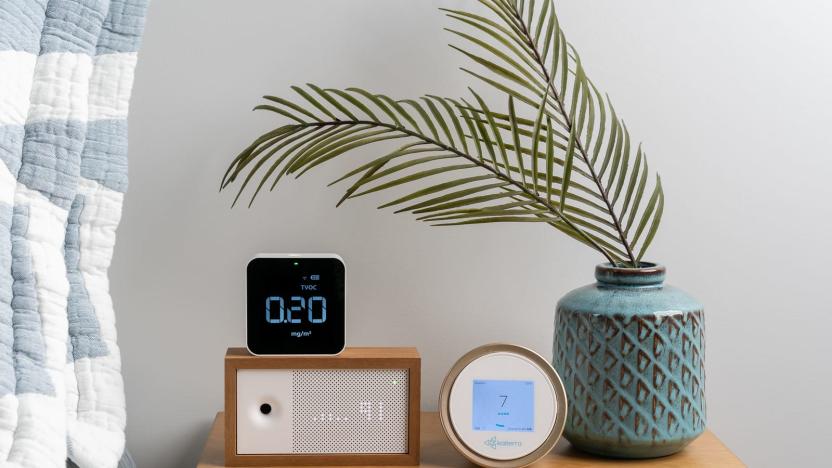
The best home air quality monitor
By Tim Heffernan This post was done in partnership with Wirecutter. When readers choose to buy Wirecutter's independently chosen editorial picks, Wirecutter and Engadget may earn affiliate commission. Read the full guide to home air quality monitors. A good air quality monitor can measure air pollution in your home—though it won't actually do anything to fix it. After living with seven monitors, and using our experience in testing air purifiers to determine how accurate (and necessary) these devices are, we recommend the Kaiterra Laser Egg+ Chemical. With its easy-to-use app, reliable and intuitive information, and versatile smart-home integrations, this is the device we'd turn to first to find out whether an air purifier or HVAC filter was working as expected. With its clean design, simple and efficient physical controls and app, and smart functionality, the Kaiterra Laser Egg+ Chemical provides the most versatility and capability of the monitors we tested. The app itself was the best we tested: stable and logically laid out, with air quality readings that were clearly displayed. And the device is easy to use and live with. A single button cycles through the Kaiterra's readings, and at night, you can shut off the display—while the device continues to monitor the air—so it won't disturb your sleep. And because the Kaiterra has Apple HomeKit and IFTTT support built in—with Google Home and Alexa expected by the end of 2019—you can program the device to automatically turn on a smart air purifier or central AC in the event of poor air quality. Like many of the best monitors we tested, the Kaiterra met a primary requirement to measure several types of pollution that have a meaningful impact on air quality. If you don't need smart functionality or an app, and you just want to be able to glance at a monitor and know what's going on in your air, we recommend the Temtop M10. Like the Kaiterra, it measures particulate and gaseous pollutants, and the two gave virtually identical readings in our testing. Its bright display can be read from across a room, and its tiny size and simple form make it easy to keep on a desk or bedside table. Lacking Wi-Fi connectivity, it has no associated app, let alone smart functionality. But that's not an inherent weakness. It's just a different approach to air quality monitoring that we think will satisfy many people's needs. And the M10 usually costs less too.
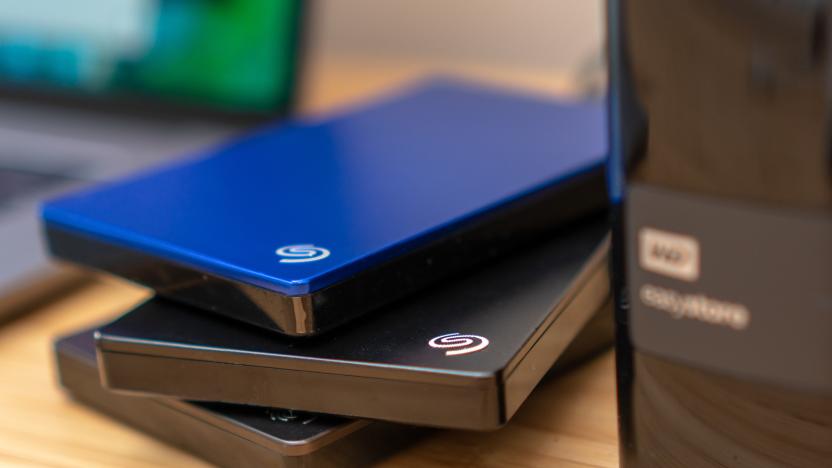
The best external hard drives
By Justin Krajeski This post was done in partnership with Wirecutter. When readers choose to buy Wirecutter's independently chosen editorial picks, Wirecutter and Engadget may earn affiliate commission. Read the full guide to external hard drives. We've spent hundreds of hours researching and testing external drives to find the best options for any use and budget. If you want a dependable external drive that has plenty of storage space for documents and photos and is easy to take on the go, get the 2 TB Seagate Backup Plus Slim. But we also have recommendations if you want more storage space, if you want something more reliable or even faster, or if you need to regularly move large amounts of data from one computer to another with an external drive.
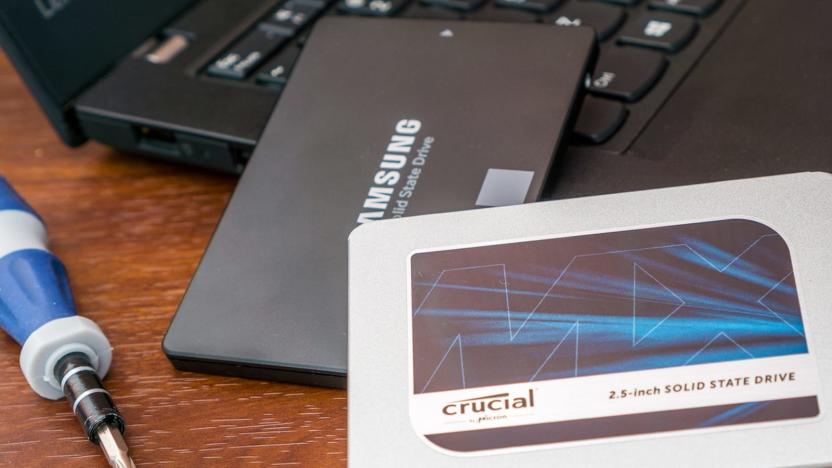
The best SSDs
By Andrew Cunningham This post was done in partnership with Wirecutter. When readers choose to buy Wirecutter's independently chosen editorial picks, Wirecutter and Engadget may earn affiliate commission. Read the full guide to SSDs. Whether you're replacing an existing solid-state drive or upgrading from a traditional hard drive to get better performance, almost every SSD you can buy today is great. But some are still better than others. If you need to buy a SATA SSD right now, we think the 500 GB Crucial MX500 is the best option for most people. The MX500 isn't the fastest SATA SSD you can get, but it comes close, and it has the best combination of price, performance, endurance, and capacity of any drive you can buy. The Crucial MX500 is just a little slower than Samsung's more expensive SATA SSDs in most benchmarks, but most people wouldn't notice the difference. It's as good as or better than the rest of the competition and it performs better when full or near-full than its predecessor, the MX300. It supports full-disk encryption and it comes in both 2.5-inch and M.2 SATA versions, but not the (older, less common) mSATA. Crucial offers a five-year warranty on the drive for more peace of mind (three years is typical), The Samsung 860 Evo replaces the 850 Evo, which was our top SSD pick for nearly three years. Compared with both its predecessor and the Crucial MX500, the 860 Evo is a little faster and offers much better durability. And in addition to the 2.5-inch and M.2 versions, it's available as an mSATA drive, unlike the MX500 and most other modern SSDs. But it's usually more expensive than the MX500, and you won't notice the difference between the two in day-to-day use. The MX500 is the drive to get as long as it's cheaper. Any good SATA SSD will help your PC boot quickly, speed up app launches and load times for games, and generally make your computer more responsive; most people, including gamers, don't need anything faster. But serious video and photo editors, server admins, CAD designers, software developers, and other people with workstation-style demands—anyone who frequently loads and saves large files—may benefit from a faster drive. If that describes you, choose the PCIe Samsung 970 Evo Plus, which can be four or five times faster than the fastest SATA drives. It's more expensive—typically $50 or $60 more than a good SATA drive for 500 GB and around $120 more for 1 TB—and you'll need a desktop or an M.2 PCIe–equipped laptop to use it. Just remember that the difference between a SATA SSD and a PCIe SSD isn't as noticeable as the difference between a SATA SSD and a spinning hard drive. Western Digital's WD Blue SN500 is a budget M.2 PCI Express SSD that's faster than (and around the same price as) the SATA-based MX500 or 860 Evo. It's the best option if you're building a new desktop computer, configuring a barebones mini PC, or upgrading a one- or two-year-old laptop that you bought with a smaller SSD and you want a fast drive for a lot less money than the 970 Evo. But most people will be just fine with a SATA drive (and you also shouldn't upgrade to the SN500 from a SATA SSD of an equal or greater capacity). The SN500 performs well for the price and comes with a solid five-year warranty from a reliable company. But it comes in only 250 and 500 GB capacities, it doesn't support hardware encryption acceleration, and like all M.2 PCIe drives it will work in only newer PCs.

The best smart outdoor lighting for backyards, pathways and more
By Rachel Cericola This post was done in partnership with Wirecutter. When readers choose to buy Wirecutter's independently chosen editorial picks, Wirecutter and Engadget may earn affiliate commission. Read the full guide to smart outdoor lighting for backyards, pathways, and more. Outdoor lighting isn't a splurge—it can save you from tripping on a dark pathway (again) or having to fumble for the right key. It enhances home security, and it can even light up a party. Smart outdoor lighting takes it to another level by adding automation, remote control, and other convenience features. We spent a month testing outdoor-rated smart bulbs, sconces, path lights, and spotlights, and found the best options for every outdoor scenario. The only smart outdoor bulb we tested with a built-in motion sensor, the floodlight-style Sengled Smart PAR38 LED Bulb can light up a driveway or backyard when you need it and not when you don't. It requires a Zigbee hub, but it also works directly with an Amazon Echo Plus. The motion sensor is especially useful if you want an outdoor bulb for security purposes, and you can adjust its settings so that it doesn't trigger too frequently or at the wrong time. The Ring Pathlight offers a near-instant option for providing helpful and elegant lighting to areas that may be tricky to navigate in the dark such as walkways or patios. It's powered by four D batteries, so you have no wires to deal with, and you can directly control it using an app or set it to turn on and off automatically through a built-in motion sensor. Because this model relies on non-rechargeable batteries, it's meant to light up for short periods of time—less than 15 minutes—so it may not be the best choice for anyone who needs constant lighting. The Philips Hue White and Color Ambiance Calla Bollard is the best-looking smart outdoor light we tested—it's a perfect addition to any party. It has a slick design with a color-changing, dimmable LED at the top that can match outdoor decor or your mood. It does require a hub, such as the Hue Bridge, the Amazon Echo Plus, or the SmartThings Hub. It also requires a power supply (included in the base kit), which can accommodate up to five fixtures.

Wirecutter's best deals: The Eero Pro mesh networking kit, and more!
This post was done in partnership with Wirecutter. When readers choose to buy Wirecutter's independently chosen editorial picks, it may earn affiliate commissions that support its work. Read Wirecutter's continuously updated list of deals here.
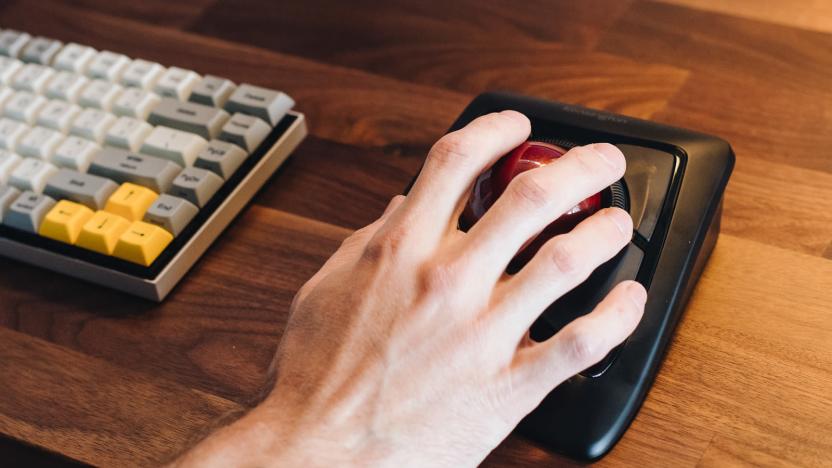
The best trackballs
By Thorin Klosowski This post was done in partnership with Wirecutter. When readers choose to buy Wirecutter's independently chosen editorial picks, Wirecutter and Engadget may earn affiliate commission. Read the full guide to trackballs. After spending more than 120 hours testing eight trackballs during weeks of work, we found that the best trackballs are the finger-operated Kensington Expert Mouse Wireless Trackball and the thumb-operated Logitech MX Ergo Wireless Trackball. We also have budget picks—the Kensington Orbit Trackball with Scroll Ring and the Logitech M570 Wireless Trackball—if you don't mind sacrificing build quality and a couple of features for a more affordable trackball. Finger-operated trackballs with center-mounted balls work for both right- and left-handed people and encourage better wrist posture, while thumb-operated trackballs are more similar to traditional mice and therefore easier to get the hang of using. (For more information, see Should you switch to a trackball? below.)

The best iPhone screen protectors
By Nick Guy This post was done in partnership with Wirecutter. When readers choose to buy Wirecutter's independently chosen editorial picks, Wirecutter and Engadget may earn affiliate commission. Read the full guide to iphone screen protectors. You don't have to spend as much as a few trips to the movies on a good glass screen protector for your iPhone—after testing six models, we found the affordable Maxboost Premium Tempered Glass Screen Protector to be the best for the iPhone XS/11 Pro, XS Max/11 Pro Max, and XR/11. It covers the entire active area of the iPhone's display, it's crystal clear, it's as scratch-resistant as anything else we tested, and fingerprints wipe right off. It includes a nice selection of cleaning tools, and we found installation to be easy enough. And if you get a speck of dust under the glass on your first attempt, it's not the end of the world—you get three Maxboost protectors in each package. A glass screen protector can't guarantee that you won't break your iPhone's screen. But it can prevent the screen from getting scratched, and scratches can affect glass' structural integrity and make cracks more likely. Glass is more protective than film, and it comes closer to the look and feel of the iPhone's own display. TechMatte's amFilm Tempered Glass Screen Protector for iPhone X/XS/11 Pro, XS Max/11 Pro Max, and the XR/11 uses similar glass as our top pick for the iPhone 8 and 8 Plus, but the included alignment tool has a little more wiggle room than the Maxboost protector for the iPhone X and later, making a perfect installation more difficult. It comes with three pieces of glass, though, meaning that if our pick goes out of stock or jumps in price, you can still get a great protector—and a few shots at a perfect installation—for a good price.

The best wireless mouse
By Justin Krajeski This post was done in partnership with Wirecutter. When readers choose to buy Wirecutter's independently chosen editorial picks, Wirecutter and Engadget may earn affiliate commission. Read the full guide to wireless mice. After researching 42 wireless mice and testing 14, we found that the Logitech M720 Triathlon Multi-Device Wireless Mouse is the best wireless mouse for most people because it is more comfortable to use than nearly every other mouse we tested, connects easily via a USB dongle or Bluetooth, and tracks well on most surfaces. Because of its tall, arched back, the Logitech Triathlon fit into our testers' hands nicely. It was more comfortable than similarly priced options. We never experienced any issues connecting it to both Mac and Windows laptops via USB dongle or Bluetooth, and it can pair with—and quickly switch between—three Bluetooth-compatible devices. Logitech claims that the Triathlon's battery can last for two years; we've been using the same mouse for about 15 months, and it has yet to die. It also has six programmable buttons you can customize using Logitech's Options software and a scroll wheel that toggles between ratcheted and freewheel scrolling. If the Logitech M720 Triathlon is unavailable, we recommend the Logitech M585 Multi-Device Wireless Mouse or the Logitech M590 Silent Wireless Mouse. Both mice have tall 1.6-inch-high backs, and our testers generally found they fit their hands as comfortably as the Triathlon even though they're a little smaller. They can connect through a USB dongle or pair with up to two devices via Bluetooth, unlike the Triathlon's three. Logitech claims that the battery will last for two years. The M585 and M590 have one fewer button than our top pick, and you can customize any of their five buttons with Options. While our panel preferred the Logitech M590's silent buttons, which still provide feedback without a loud, physical click, the mouse is not as widely available or as affordable as the M585. If you spend all day using a mouse, we recommend the Logitech MX Master 2S Wireless Mouse for its comfortable design, its buttons, and its secondary thumb scroll wheel. Since it's nearly a half-inch wider and longer than the Triathlon, our panel found it comfortable for all grips and hand sizes, especially those with bigger hands. It's more than twice as expensive, but it did track even more precisely than the Triathlon in our testing. Like the Triathlon, it can connect to and switch between up to three devices via Bluetooth or dongle. The MX Master 2S has a rechargeable battery that can last for about two months on a single charge. It has six programmable buttons—as many as the Triathlon—that can be customized with Logitech Options software, and it offers a second scroll wheel for your thumb. The Logitech MX Master 3S Wireless Mouse has improved button placement below the thumb scroll wheel, and it's a tad more comfortable to use, but at the time of this writing it's too expensive to recommend over the 2S. If the price drops below $85, it's the best mouse for people who spend all day using one. Our portable pick is the Logitech Anywhere 2S Wireless Mouse. The Anywhere 2S is smaller than most mice we tested—and its back arch was about a half-inch shorter than the Triathlon's—but we found that it was still really comfortable to use over long periods of time. Like all of our picks, it can connect via USB dongle or Bluetooth; it can wirelessly connect with up to three devices. Like the MX Master 2S, the Anywhere 2S has a rechargeable battery that can last for around two months before you'll need to recharge it. It has five programmable buttons (one is hiding behind its scroll wheel), and it offers Options software for you to customize each button to your liking.

The best personal blender
By Lesley Stockton This post was done in partnership with Wirecutter. When readers choose to buy Wirecutter's independently chosen editorial picks, Wirecutter and Engadget may earn affiliate commission. Read the full guide to personal blenders. After spending 28 hours researching two dozen personal blenders and testing 12 models in our test kitchen, we think the NutriBullet Pro 900 Series offers the best balance of power, simplicity, convenience, and price for most people. We pureed almost 25 pounds of frozen fruit, hearty kale, fibrous ginger, gooey peanut butter, and sticky dates into thick smoothies to come to this conclusion. The NutriBullet won us over with its blending abilities, ease of use, and price. The powerful motor didn't strain blending thick mixtures, and it pureed tough kale and frozen fruit into a satisfying drinkable consistency. The blending quality is on par with midrange full-sized blenders without the bulk of a large machine. If you regularly buy a smoothie on your way to the office or class, the NutriBullet Pro will pay for itself within a month. We like the Tribest PB-150 because it's durable and offers the smallest footprint of all our picks. Although the Tribest isn't the most powerful machine on paper—it has a weaker motor and the smallest cups of all our picks—it blends really well for most food prep tasks you'd need it for. Compared to the NutriBullet and Breville Boss To Go, smoothies from the Tribest are thinner due to the extra liquid needed to get a consistent blend. But it's built to last and a solid performer if you don't mind slightly thinner smoothies. The Breville Boss To Go offers smoother blending, sleeker design, and a better travel lid than our top pick. The Boss To Go blended kale the finest, and berry seeds were the smallest of all our picks. The Breville blends thick mixtures easily without straining. The stainless steel housing and sleeker design will look good on your countertop, and the travel lid has the largest opening of all the blenders we tested for easier drinking.
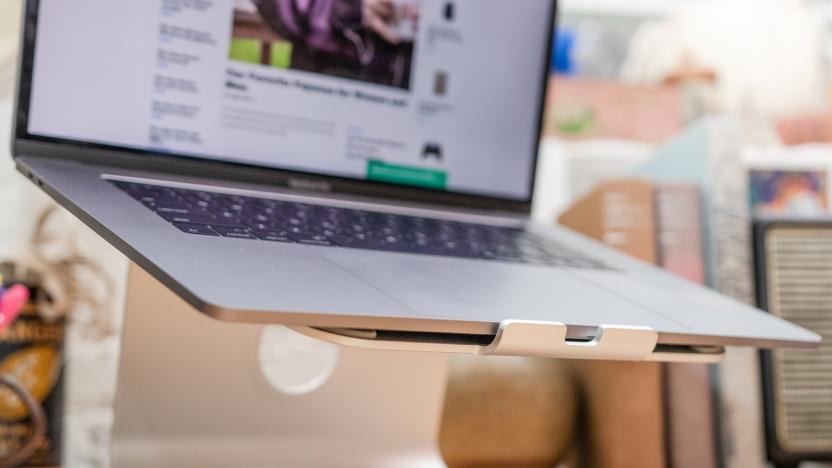
The best laptop stands
By Justin Krajeski and Kimber Streams This post was done in partnership with Wirecutter. When readers choose to buy Wirecutter's independently chosen editorial picks, Wirecutter and Engadget may earn affiliate commission. Read the full guide to laptop stands. After years testing 17 laptop stands at work and in our home offices, we found that the Rain Design iLevel 2 is the best stand for anyone who spends hours every day hunched over a laptop at their desk. None of the other laptop stands we tested matched the iLevel 2's combination of stability, adaptability, and sleek style. Paired with a wireless mouse and an external keyboard, the iLevel 2 can help fix your posture and reduce neck and arm pain. The Rain Design iLevel 2's exceptional build quality and easy adjustability are worth paying for if you need a laptop stand. It held 11-inch to 15-inch laptops with a sturdy grip in our tests, and it has a simple, straightforward design that looks stylish. It's easier to adjust than every other adjustable laptop stand we tested, too: its platform tilts upward when you slide a knob from the left to right. If you want a more affordable laptop stand that looks nicer than a stack of books, the best option is the Rain Design mStand. Like the iLevel 2, the sturdy, aluminum mStand held laptops up to 15 inches in our tests, plus it has a hole for cable management and a nook to store your keyboard. But unlike our other picks, it isn't adjustable. If you need a laptop stand to take between work and home or to use while traveling, the Roost Laptop Stand is the sturdiest and most compact portable option we tested. The Roost is pretty easy to set up and collapse, and it doesn't sacrifice stability; when you're done using the lightweight model for the day, you can fold it into a long, thick stick. Switching between the Roost's three height settings is a bit tricky, but doing so gets easier with practice. The Nexstand Laptop Stand is a decent and affordable portable option if you're willing to give up some portability and ease of use. It's similar to the Roost in design and height, and it's comparably simple to set up and break down. It was stable enough for laptops up to 15 inches in our tests, but it can be less secure than the Roost if you're not careful; for example, its six height settings aren't clearly demarcated from one another, so you need to double-check that your laptop stand is fully locked before placing a laptop on top of it. The Nexstand is a bit bigger and heavier than the Roost, too.
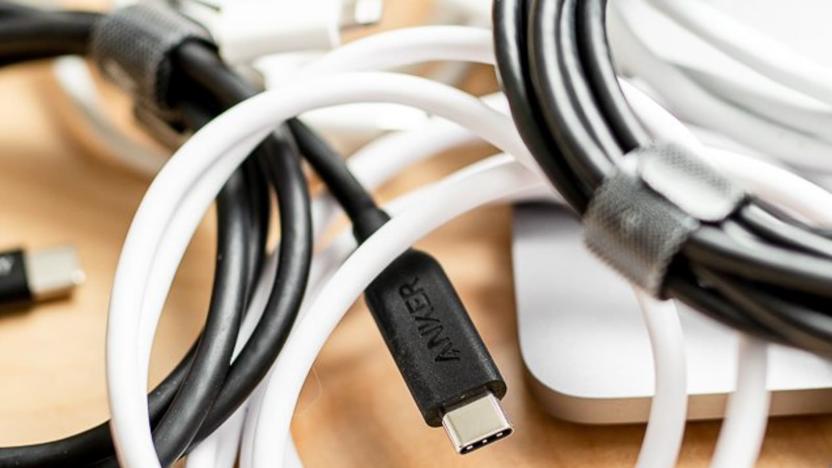
The best USB-C cables and adapters
By Sarah Witman This post was done in partnership with Wirecutter. When readers choose to buy Wirecutter's independently chosen editorial picks, Wirecutter and Engadget may earn affiliate commission. Read the full guide to USB-C cables and adapters. If you have a device with a USB-C port—like a MacBook or Android phone, or 2018 iPad Pro—you're going to need some cables. Unfortunately, when it comes to USB-C, even cables that look identical can perform very differently. Your MacBook's charging cable, for example, has the exact same connectors at each end as a top-speed Thunderbolt 3 cable, but it's different internally; it transfers data at a snail's pace, and it can't send a video signal. To make sure you get the right cable for your needs, we've tested 36 cables and 16 adapters to find the best ones for charging, data transfer, video, and more.